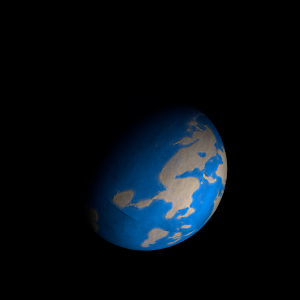|
|
Space Astro
|
Info for exoplanet "Euhali-ae"
| Scientific (actual) data |
|---|
| Planet | Kepler-1194 b |
| Planet status | Confirmed |
| Radius | 0.135 |
| Orbital period | 16.2237 |
| Discovered | 2016 |
| Updated | 2021-02-05 |
| Tconj | 2454970 |
| Publication | Announced on a website |
| Detection type | Primary Transit |
| Alternate names | 2MASS J19264789+3808429 b, K02335.01, KIC 2990873 b, KOI-2335 b, KOI-2335.01, WISE J192647.88+380842.8 b |
| Star name | Kepler-1194 |
| Right ascension | 291.7° |
| Declination | 38.15° |
| Mag j | 12.901 |
| Mag h | 12.543 |
| Mag k | 12.445 |
| Star distance | 616 |
| Star metallicity | 0 |
| Star mass | 0.94 |
| Star radius | 0.92 |
| Star age | 4.79 |
| Star temperature | 5590 |
| Star alternate names | 2MASS J19264789+3808429, KIC 2990873, KOI-2335, WISE J192647.88+380842.8 |
| Wikipedia article | Kepler-1194 b |
Back
| |
| Fictional info (?) |
|---|
| Suggested name | Euhali-ae |
| Planet type | Cold planet |
| It has the longest rotation period (445 days) of any planet in its solar system and rotates in the opposite direction to most other planets.
For this reason, scientists often classify Euhali-ae and Noepal Gaeon as "cold planets" to distinguish them from the other planets. It is named after the deity Euhali-ae, the creator of chaos.
It was the one of the first exoplanets visited by a spacecraft, and one of the first to be successfully landed on.
Optical ground-based telescopes are typically limited to resolving features about 390 kilometers across when Euhali-ae is closest because of Earth's atmosphere. |
| Atmosphere | Ammonium hydrosulfide (NH4SH) | 90% |
| Carbonyl sulfide | 9.5% |
| Hydrogen | 0% |
| Atmospheric pressure | 7 bar |
 |
| No known satellites |
| Google search for Euhali-ae |
|
Website by Joachim Michaelis
|
|
|
|